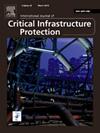OptAML: Optimized adversarial machine learning on water treatment and distribution systems
IF 5.3
3区 工程技术
Q1 COMPUTER SCIENCE, INFORMATION SYSTEMS
International Journal of Critical Infrastructure Protection
Pub Date : 2025-01-13
DOI:10.1016/j.ijcip.2025.100740
引用次数: 0
Abstract
This research presents the optimized adversarial machine learning framework, OptAML, which is developed for use in water distribution and treatment systems. In consideration of the physical invariants of these systems, the OptAML generates adversarial samples capable of deceiving a hybrid convolutional neural network-long short-term memory network model. The efficacy of the framework is assessed using the Secure Water Treatment (SWaT) and Water Distribution (WADI) datasets. The findings demonstrate that OptAML is capable of effectively evading rule checkers and significantly reducing the accuracy of anomaly detection frameworks in both systems. Additionally, the study investigates a defense mechanism that demonstrates enhanced robustness against these adversarial attacks and is based on adversarial training. Our results underscore the necessity for robust and flexible protection tactics and highlight the shortcomings of the machine learning-based anomaly detection systems for critical infrastructure that are currently in place.
OptAML:在水处理和分配系统上优化的对抗性机器学习
本研究提出了优化的对抗性机器学习框架OptAML,该框架是为水分配和处理系统而开发的。考虑到这些系统的物理不变性,OptAML生成了能够欺骗混合卷积神经网络-长短期记忆网络模型的对抗性样本。使用安全水处理(SWaT)和水分配(WADI)数据集评估该框架的有效性。结果表明,OptAML能够有效地避开规则检查器,并显著降低两个系统中异常检测框架的准确性。此外,该研究还研究了一种基于对抗性训练的防御机制,该机制展示了对这些对抗性攻击的增强鲁棒性。我们的研究结果强调了强大而灵活的保护策略的必要性,并强调了目前用于关键基础设施的基于机器学习的异常检测系统的缺点。
本文章由计算机程序翻译,如有差异,请以英文原文为准。
求助全文
约1分钟内获得全文
求助全文
来源期刊

International Journal of Critical Infrastructure Protection
COMPUTER SCIENCE, INFORMATION SYSTEMS-ENGINEERING, MULTIDISCIPLINARY
CiteScore
8.90
自引率
5.60%
发文量
46
审稿时长
>12 weeks
期刊介绍:
The International Journal of Critical Infrastructure Protection (IJCIP) was launched in 2008, with the primary aim of publishing scholarly papers of the highest quality in all areas of critical infrastructure protection. Of particular interest are articles that weave science, technology, law and policy to craft sophisticated yet practical solutions for securing assets in the various critical infrastructure sectors. These critical infrastructure sectors include: information technology, telecommunications, energy, banking and finance, transportation systems, chemicals, critical manufacturing, agriculture and food, defense industrial base, public health and health care, national monuments and icons, drinking water and water treatment systems, commercial facilities, dams, emergency services, nuclear reactors, materials and waste, postal and shipping, and government facilities. Protecting and ensuring the continuity of operation of critical infrastructure assets are vital to national security, public health and safety, economic vitality, and societal wellbeing.
The scope of the journal includes, but is not limited to:
1. Analysis of security challenges that are unique or common to the various infrastructure sectors.
2. Identification of core security principles and techniques that can be applied to critical infrastructure protection.
3. Elucidation of the dependencies and interdependencies existing between infrastructure sectors and techniques for mitigating the devastating effects of cascading failures.
4. Creation of sophisticated, yet practical, solutions, for critical infrastructure protection that involve mathematical, scientific and engineering techniques, economic and social science methods, and/or legal and public policy constructs.
 求助内容:
求助内容: 应助结果提醒方式:
应助结果提醒方式:


